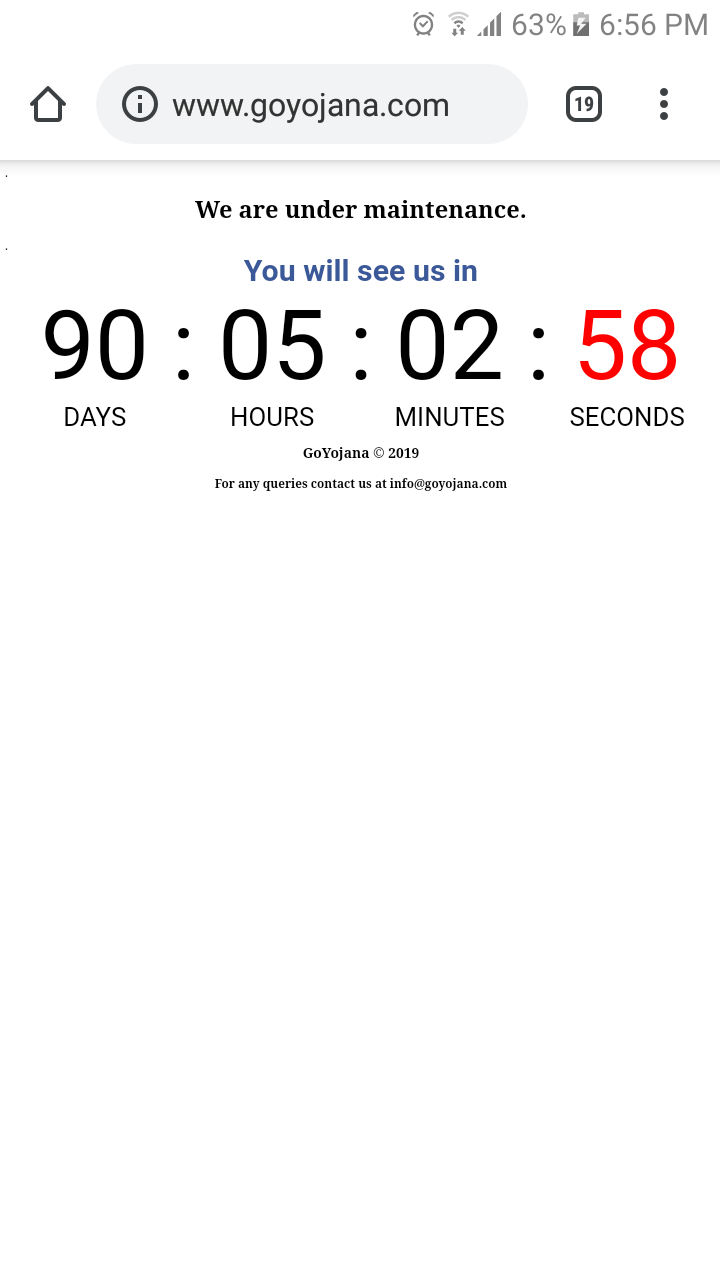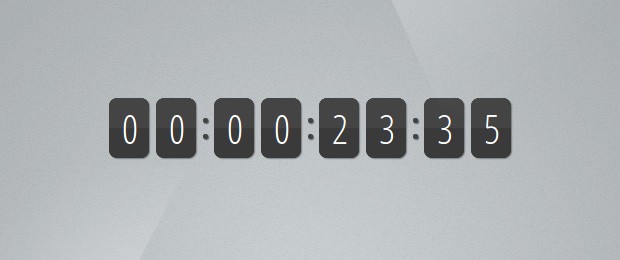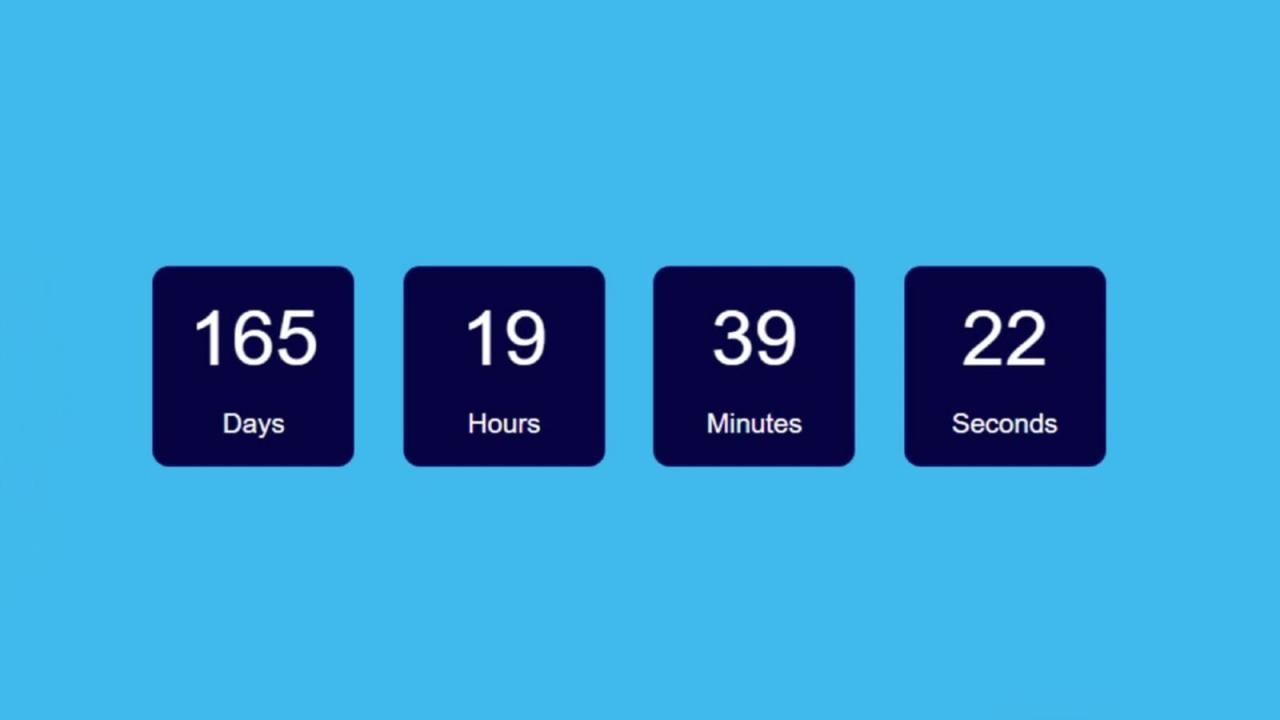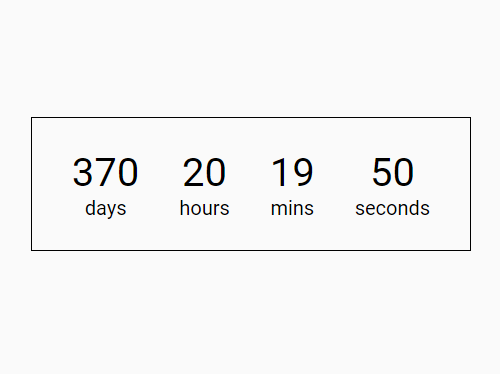You are looking for information on the topic “javascript count up timer from date”. dongtienvietnam.com will gather information to answer your questions in this article. Please read this article to the end to find the information you want to see. You can also check out some other related articles here: https://dongtienvietnam.com/category/wiki/ javascript count up timer start stop, html timer count up, count up in javascript, moment js timer count up, minute counter javascript, Time count js, count up timer widget, jquery countdown timer to specific date.
View information about the javascript count up timer from date
Information about this question
- Question: javascript count up timer from date
- Time: Updated 91 minute ago
- Modified: Asked 12 days ago
- View: 16391
javascript count up timer from date
To create a count-up timer in JavaScript, you can use the Date object to get the current time and calculate the difference between the current time and a specified start time. Here’s an example implementation:
HTML:
bash<div id="timer"></div>
JavaScript:
javascript// Set the start time const startTime = new Date("2022-01-01T00:00:00Z").getTime(); // Get the timer element const timerElement = document.getElementById("timer"); // Update the timer every second setInterval(() => { // Calculate the time difference const currentTime = new Date().getTime(); const timeDiff = currentTime - startTime; // Calculate the number of days, hours, minutes, and seconds const days = Math.floor(timeDiff / (1000 * 60 * 60 * 24)); const hours = Math.floor((timeDiff % (1000 * 60 * 60 * 24)) / (1000 * 60 * 60)); const minutes = Math.floor((timeDiff % (1000 * 60 * 60)) / (1000 * 60)); const seconds = Math.floor((timeDiff % (1000 * 60)) / 1000); // Update the timer element timerElement.innerHTML = `${days}d ${hours}h ${minutes}m ${seconds}s`; }, 1000);
In this example, the startTime variable is set to a specific date and time. The setInterval function is used to update the timer every second. Inside the setInterval function, the time difference between the current time and the start time is calculated using the getTime method of the Date object. The Math.floor function is used to calculate the number of days, hours, minutes, and seconds from the time difference. Finally, the timer element is updated with the formatted time string.
Watch videos related to “javascript count up timer from date”
JAVASCRIPT Count up timer example
How to calculate total time in JavaScript?
To calculate the total time in JavaScript, you can use the built-in Date object. The Date object provides methods for working with dates and times, including creating new date objects, getting and setting date and time values, and performing operations on dates and times.
To calculate the total time, you can create two Date objects representing the start time and end time, and then subtract the start time from the end time. This will give you the difference in milliseconds between the two times. You can then convert this difference to the desired unit of time (e.g. seconds, minutes, hours) using simple arithmetic.
Here’s an example of how to calculate the total time in JavaScript:
javascript// Create two Date objects representing the start time and end time const startTime = new Date('2023-03-14T10:00:00'); const endTime = new Date('2023-03-14T11:30:00'); // Calculate the difference in milliseconds between the two times const diffInMs = endTime - startTime; // Convert the difference to minutes const diffInMinutes = diffInMs / (1000 * 60); // Display the result console.log(`The total time is ${diffInMinutes} minutes.`);
In this example, we create two Date objects representing the start time and end time. We then subtract the start time from the end time to get the difference in milliseconds. We divide this difference by 1000 to convert it to seconds, and then by 60 to convert it to minutes. Finally, we display the result in the console.
How to make a timer that counts up in JavaScript?
To create a timer that counts up in JavaScript, you can use the setInterval method to execute a function repeatedly at a given interval. Here is an example implementation:
javascriptlet startTime = new Date().getTime(); // Get the current time in milliseconds let timer = setInterval(function() { let elapsedTime = new Date().getTime() - startTime; // Calculate elapsed time let seconds = Math.floor(elapsedTime / 1000); // Convert milliseconds to seconds // Update the HTML element with the elapsed time document.getElementById("timer").innerHTML = seconds + " seconds"; }, 1000); // Update every 1 second (1000 milliseconds)
In this code, we first initialize the start time using the Date().getTime() method, which returns the current time in milliseconds. We then use the setInterval method to execute a function every second, which calculates the elapsed time by subtracting the start time from the current time in milliseconds. We then convert the elapsed time to seconds and update an HTML element with the elapsed time.
To stop the timer, you can use the clearInterval method and pass in the timer variable as a parameter. For example:
javascriptclearInterval(timer);
This will stop the timer from executing the function repeatedly.
How to set a timer in JavaScript?
To set a timer in JavaScript, you can use the setTimeout() function, which will execute a specified function once after a set amount of time has passed. Here’s an example:
javascript// Define the function to be executed after the timer function myFunction() { console.log("Hello, world!"); } // Set the timer for 5 seconds (5000 milliseconds) setTimeout(myFunction, 5000);
In this example, setTimeout() is used to call the myFunction() function after 5 seconds (5000 milliseconds) have passed. When the timer is up, the message “Hello, world!” will be printed to the console.
You can also use the setInterval() function to execute a specified function repeatedly at set intervals. Here’s an example:
javascript// Define the function to be executed at each interval function myFunction() { console.log("Hello, world!"); } // Set the interval for 1 second (1000 milliseconds) setInterval(myFunction, 1000);
In this example, setInterval() is used to call the myFunction() function every 1 second (1000 milliseconds). The message “Hello, world!” will be printed to the console repeatedly at each interval. To stop the interval, you can use the clearInterval() function and pass in the interval ID returned by setInterval().
Images related to javascript count up timer from date
Found 29 javascript count up timer from date related images.




javascript count up timer start stop
Here is an example of a JavaScript count-up timer that can be started and stopped:
HTML code:
php<p>Time elapsed: <span id="timer">0</span> seconds</p> <button onclick="startTimer()">Start</button> <button onclick="stopTimer()">Stop</button>
JavaScript code:
javascriptvar startTime; var timerInterval; function startTimer() { startTime = Date.now(); timerInterval = setInterval(updateTimer, 1000); } function stopTimer() { clearInterval(timerInterval); } function updateTimer() { var elapsedTime = Math.floor((Date.now() - startTime) / 1000); document.getElementById("timer").innerHTML = elapsedTime; }
Explanation:
- The HTML code contains a paragraph with a span element that will display the elapsed time in seconds, and two buttons to start and stop the timer.
- The JavaScript code declares three variables:
startTimeto store the timestamp when the timer starts,timerIntervalto store the interval ID returned bysetInterval(), andelapsedTimeto calculate the time elapsed since the timer started. - The
startTimer()function sets thestartTimevariable to the current timestamp usingDate.now(), and starts a new interval usingsetInterval()that calls theupdateTimer()function every second (1000 milliseconds). - The
stopTimer()function stops the interval usingclearInterval()and effectively pauses the timer. - The
updateTimer()function calculates the elapsed time in seconds by subtracting thestartTimefrom the current timestamp, dividing by 1000 to convert to seconds, and rounding down usingMath.floor(). It then updates the text content of thespanelement usingdocument.getElementById("timer").innerHTML.
html timer count up
To create a count-up timer in HTML, you can use JavaScript to calculate the time elapsed since a specific event and display it on the webpage.
Here’s an example code snippet:
html<!DOCTYPE html> <html> <head> <title>Count-up Timer</title> <script> function startTimer() { let startTime = new Date(); setInterval(function() { let elapsedTime = new Date() - startTime; document.getElementById("timer").innerHTML = formatTime(elapsedTime); }, 1000); } function formatTime(time) { let seconds = Math.floor(time / 1000); let minutes = Math.floor(seconds / 60); let hours = Math.floor(minutes / 60); let days = Math.floor(hours / 24); return days + " days " + hours % 24 + " hours " + minutes % 60 + " minutes " + seconds % 60 + " seconds"; } </script> </head> <body onload="startTimer()"> <h1>Count-up Timer</h1> <p id="timer"></p> </body> </html>
In this code, we define a startTimer() function that sets the startTime variable to the current time using the Date() function. We then use the setInterval() function to update the timer every second, calculating the elapsed time since startTime and displaying it on the webpage using the innerHTML property of the timer element.
We also define a formatTime() function that takes a time in milliseconds and formats it into days, hours, minutes, and seconds. This function is used to display the elapsed time in a user-friendly format.
To start the timer when the webpage loads, we use the onload attribute on the body element to call the startTimer() function.
Note that this code assumes that you want to start the timer when the webpage loads. If you want to start the timer based on a user action, such as clicking a button, you would need to modify the code accordingly.
You can see some more information related to javascript count up timer from date here
- Count Up from Date and Time with Javascript – CodePen
- JavaScript count-up timer – Stack Overflow
- Count Up from Date and Time with Javascript – guwii
- Help me make a countup timer (date) – W3Schools Forum
- Creating Count-Up Timer – imballinst.dev
- How to create a countdown timer using JavaScript – Educative.io
- How to find the time taken to execute a function in JavaScript – Educative.io
- JavaScript Count Up Timer – Linux Hint
- JavaScript Timing Events – W3Schools
- JavaScript timer – javatpoint
- How To Create a Countdown Timer – W3Schools
- Javascript Count Up Timer – Copy Programming
- 10 Best Countup Timer Plugins In JavaScript (2023 Update)
- Easy Timer – إضافة ووردبريس | WordPress.org العربية
Comments
There are a total of 162 comments on this question.
- 641 comments are great
- 821 great comments
- 291 normal comments
- 138 bad comments
- 45 very bad comments
So you have finished reading the article on the topic javascript count up timer from date. If you found this article useful, please share it with others. Thank you very much.